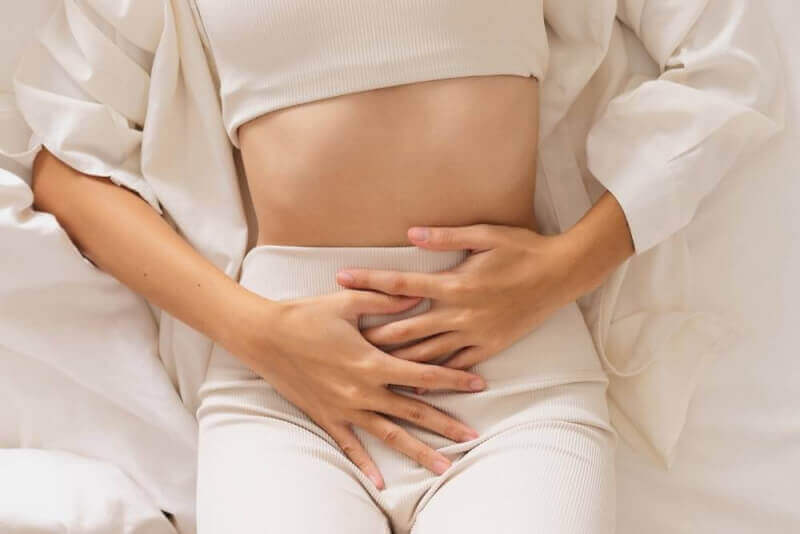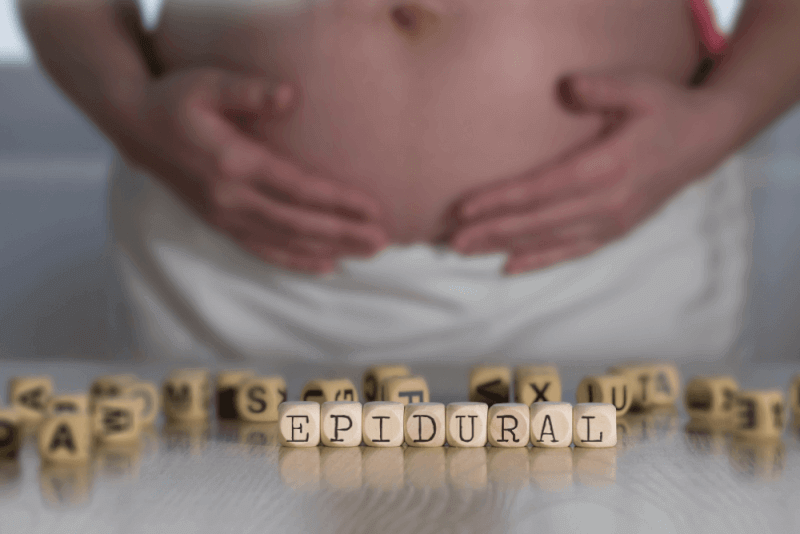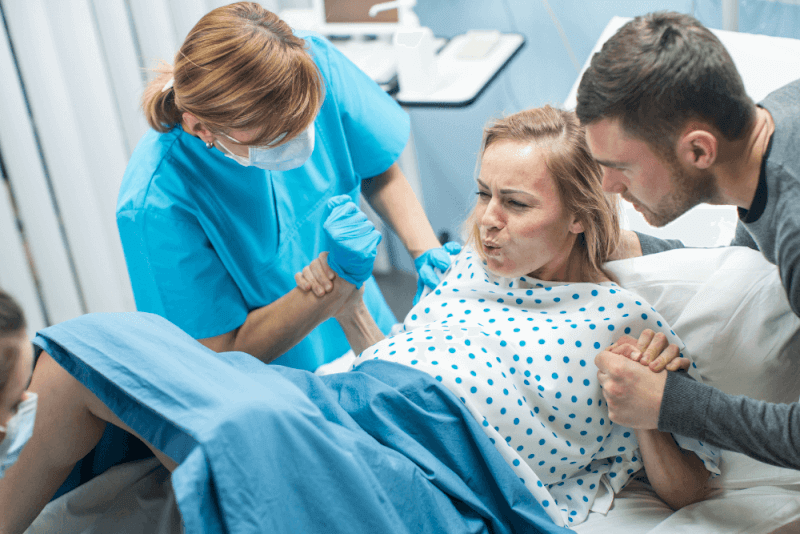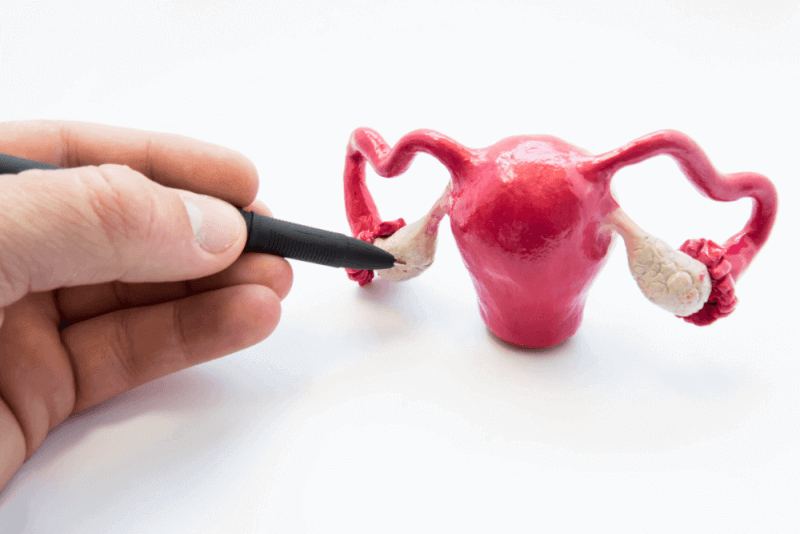What is Endometriosis (Chocolate Cyst)?
Endometriosis is one of the most common gynecologic diseases today. Affected girls and women have benign, often painful growths of endometrial-like tissue outside the uterine cavity, often growing on neighboring organs and tissues.
Foci of endometriosis are usually found in the lower abdomen or pelvis, ovaries, fallopian tubes and deeper layers of the uterine wall and intestine. In principle, endometrium-like tissue can grow anywhere in the body.
Scattered areas of endometriosis grow like the lining of the uterus during the menstrual cycle. This is associated with cramping pain and chronic abdominal and back pain that often occurs during the cycle. They bleed every menstrual period, but the blood usually does not flow out, while blood cysts form at the same time.
The disease and its symptoms can be as different as where the endometrium is located. Usually only pinhead-sized deposits can be seen, but larger, blood-filled cysts can also develop - especially in the ovaries. The fallopian tubes can also stick together, and in very serious cases, adhesions between the uterus, fallopian tubes, ovaries, bladder and intestines are also possible.
The name of the disease is derived from three ancient Greek words: "endon" "metra" and "osis".
Causes of Endometriosis (Chocolate Cyst)
Despite intensive research, it is still unclear how endometriosis develops. However, there are a number of scientific theories about the origin of the disease.
Possible Development of Endometriosis
The implantation theory assumes that instead of passing through the cervix, parts of the endometrium enter the abdomen through the fallopian tubes during a reverse process called "retrograde menstruation". It sounds strange, but nine out of ten women experience retrograde menstruation. This process can occur not only during menstruation but also at other times of the menstrual cycle. Shortly before ovulation, there is a suction from the uterus in the direction of the fallopian tube, so that during this time endometrial cells or, for example, sperm are sucked into the fallopian tube. In this way, pieces of mucous membrane can enter the abdominal cavity.
The coelom metaplasia theory states that foci of endometriosis originate directly from stem cells lining the body cavity (coelom) in the embryo. Proliferation (metaplasia) can be triggered by inflammation and hormonal influences.
The Archimetra theory assumes that endometriosis is a consequence of adenomyosis or one of its precursors. In this case, the tissue lining the uterus grows into the muscle layer of the uterus. About every second endometriosis patient also suffers from adenomyosis.
Other hypotheses aim at changes in the immune system of affected women. Antibodies against the lining of the uterus can then be detected in the blood. This leads to inflammation in the area of endometriosis foci. Until now, however, it has not been clarified whether this dysfunction is a possible cause or consequence of endometriosis.
A genetic cause, which is inherited with a 50% probability, is considered to be certain. Recently, researchers 3. and In connection with grade 4 endometriosis they have often found gene mutations in the so-called neuropeptide S-receptor 1, hormonal drugs for endometriosis.
So far, none of these findings have been able to adequately explain the entire phenomenon of endometriosis, so the possible causes remain the subject of medical research.
Endometriosis (Chocolate Cyst) Symptoms
In endometriosis, cells similar to those in the lining of the uterus are also found outside the uterus and can cause symptoms. Such foci of endometriosis are usually distributed throughout the abdominal cavity, so that the peritoneum, vaginal wall, intestines and ovaries can be affected. This kind of "stray" or scattered uterine lining cells sometimes cause no symptoms. If symptoms do occur, they are quite non-specific - which makes diagnosis and consequently correct treatment difficult.
Affected women often suffer from a range of complaints, some of which disrupt their private and professional daily lives and reduce their quality of life. However, some women may also be free of symptoms.
Depending on where and how severely the foci of endometriosis burn in the body, the following symptoms may occur:
- Abdominal pain cramps before and during menstruation (dysmenorrhea)
- Frequent recurrent pain in the lower abdomen
- Nausea
- Constipation, diarrhea or painful bowel movements
- Bleeding irregularities
- Pain during sexual intercourse and/or gynecological examination
- Headache, dizziness
- Nausea
- Unmet desire to have children
- Irritable bladder, painful urination
- Blood in urine or feces
Typically, the intensity of endometriosis-related symptoms varies according to the menstrual cycle. The peak is one to three days before the onset of menstruation. When menstruation subsides, the symptoms also subside again and may then subside completely.
Depending on the localization of the foci of endometriosis, symptoms can also persist permanently. This is usually the case when there are already adhesions to the surrounding tissue. It is also possible that symptoms only occur during sexual intercourse or during bowel movements. Sometimes blood is only found in the patient's stool or urine.
Chocolate Cyst Treatment Methods
If endometriosis foci do not cause any symptoms and do not tend to grow, no treatment is necessary. Otherwise, the following applies: The earlier endometriosis is treated, the better the chances of symptom relief, recovery and fertility in the long term.
The treatment plan depends on the degree of symptoms and the location of the endometriosis. The patient's age and desire to have children are also taken into account when deciding for or against certain therapy options.
Accordingly, treatment can vary from person to person. Conservative (medical, hormonal) and surgical treatment options are available, which can be used individually or in combination. Treatment of the cause of the disease itself is not yet known.
Medication can also be useful as an alternative, but also as a long-term concept. It aims to relieve symptoms or prevent the disease from recurring. There are drug therapies that address symptoms (e.g. pain) or have a direct or indirect effect on the foci of endometriosis.
Pain management and anti-inflammatory therapy
Proven painkillers such as acetylsalicylic acid, ibuprofen or diclofenac help against the pain caused by the disease. They also have an anti-inflammatory effect. However, self-treatment with over-the-counter painkillers should always be coordinated with the doctor.
Anti-inflammatory drugs (COX-2 inhibitors) have also proven effective in anti-inflammatory therapy. They suppress the accompanying reactions of the disease and help prevent chronic pain. In the case of pronounced or chronic symptoms, pain management with an individual therapy plan can be beneficial.
Hormone Therapy (Endocrine Therapy)
The female sex hormone estrogen is considered a key growth stimulus for endometriosis foci. Hormonal therapies therefore aim to lower estrogen levels or prevent menstruation. As a result, the existing foci of endometriosis shrink and the associated symptoms decrease. They all interfere with sex hormone balance and often also have a contraceptive effect.
The most important drugs in the hormonal treatment of endometriosis are
- Pure progestins (corpus luteum hormones): such as dydrogesterone, dienogest and, if necessary, medroxyprogesterone acetate. Dienogest is the only progestin specifically approved for the treatment of endometriosis. The artificial hormone is taken as a tablet and lowers estrogen levels with daily use. As an alternative to systemic progestin therapy, the use of a progestin-containing (levonorgestrel) intrauterine device (IUD) may be considered in rare cases.
- Monophasic estrogen-gestagen combination preparations ("pills"), when taken continuously, ensure that the uterine lining does not build up and thus reduce the pain caused by endometriosis.









